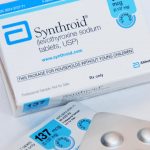
Contents
Lexapro vs. Xanax
Lexapro is a selective serotonin reuptake inhibitor (SSRI) used to treat depression and generalized anxiety disorder. Other SSRIs include citalopram, fluoxetine, paroxetine, and sertraline. SSRIs affect neurotransmitters in the brain, the chemical messengers that nerves use to communicate. An imbalance of neurotransmitters is believed to cause depression. Lexapro prevents the reuptake of serotonin, which results in more serotonin available in the brain.
Xanax is a benzodiazepine used to treat anxiety. Other benzodiazepines include diazepam, clonazepam, lorazepam, and flurazepam. Xanax enhances the effects of the neurotransmitter gamma-aminobutyric acid (GABA) in the brain. Excessive activity in the brain may cause anxiety or other psychiatric disorders.
Side effects of Lexapro and Xanax
Lexapro
Common side effects of Lexapro include:
- agitation or restlessness
- blurred vision
- diarrhea
- difficulty sleeping
- drowsiness
- dry mouth
- fever
- frequent urination
- headache
- indigestion
- nausea
- increased or decreased appetite
- increased sweating
- sexual difficulties (decreased sexual ability or desire, ejaculatory delay)
- taste alterations, tremor
- weight changes
Antidepressants increased the risk of suicidal thinking and behavior in studies in children and adolescents with depression and other psychiatric disorders. Anyone considering the use of Lexapro or any other antidepressant in a child or adolescent must balance this risk with the clinical need. Short-term studies did not show an increase in the risk of suicidality with antidepressants compared with placebo in adults beyond 24 years of age. There was a reduction in risk of suicidality with antidepressants compared with placebo in adults 65 years of age and older. Depression and certain other psychiatric disorders are themselves associated with increases in the risk of suicide. Patients who are started on therapy with antidepressants should be closely observed for clinical worsening, suicidality, or unusual changes in behavior.
Other side effects include influenza-like symptoms and pain in neck or shoulders.
Although changes in sexual desire, performance, and satisfaction often occur as a result of depression itself, they may also be a consequence of the drugs used to treat depression. About one in 11 men given Lexapro report difficulties ejaculating.
Possible serious side effects of Lexapro include:
- Serotonin syndrome
- Suicidal thinking and behavior
- Abnormal bleeding
- Seizures
- Manic episodes
- Confusion
- High fever
- Slurred speech
- Muscle rigidity
- Low sodium
- Angle closure glaucoma
WARNING
Some patients experience withdrawal reactions upon stopping SSRI therapy. Symptoms may include dizziness, tingling, tiredness, vivid dreams, irritability, or poor mood. In order to avoid these symptoms, the dose of SSRI can be slowly reduced instead of abruptly stopped.
Xanax
The most common side effects of Xanax at lower doses are:
Other side effects include:
- Memory problems
- Speech problems
- Constipation
- Changes in weight
- Addiction
Addiction is more likely to occur at high doses given over prolonged periods of time. Abrupt discontinuation of alprazolam after prolonged use can lead to symptoms of withdrawal such as seizures. Patients on alprazolam for extended periods of time should slowly taper the medication under a doctor’s supervision.
Dosage of Lexapro vs. Xanax
Lexapro
- The usual starting dose of Lexapro for treating depression is 10 mg once daily. The dose may be increased to 20 mg once daily after 3 weeks.
- Benefit may not be seen until treatment has been given for up to 4 weeks. A daily dose of 20 mg may not be more effective than 10 mg daily for treatment of depression.
- The dose for treating generalized anxiety disorder is 10 mg once daily.
- Lexapro can be taken with or without food.
Xanax
- The starting dose for treating anxiety is 0.25-0.5 mg 3 to 4 times daily. The dose may be increased every 3-4 days to a maximum dose of 4 mg daily.
- The starting dose for treating panic attacks is 0.5 mg 3 times daily. Doses can be increased every 3-4 days but by no more than 1 mg daily.
- The effective dose for preventing panic attacks may be as high as 10 mg daily. The starting dose when using extended release tablets to treat panic disorder is 0.5 mg once daily and the average dose is 3-6 mg once daily.
- Alprazolam may be taken with or without food.
Drug interactions with Lexapro and Xanax
Lexapro
- Lexapro should not be combined with drugs in the MAO inhibitor class of antidepressants or other drugs that inhibit monoamine oxidase. Such combinations may lead to confusion, high blood pressure, high fevers, tremor, muscle rigidity, and increased activity. At least 14 days should elapse after discontinuing Lexapro before starting an MAO inhibitor. Conversely, at least 14 days should elapse after discontinuing an MAO inhibitor before starting Lexapro.
- Similar reactions occur when Lexapro is combined with other drugs that increase serotonin in the brain.
- Use of selective serotonin inhibitors may increase the risk of gastrointestinal bleeding in patients taking certain drugs.
Xanax
- Ketoconazole, itraconazole, nefazodone, cimetidine, and fluvoxamine increase concentrations in the blood of alprazolam and therefore may increase the side effects of alprazolam.
- Alprazolam interacts with alcohol and medications that suppress activity in the brain by suppressing activity more and causing sedation.
- Carbamazepine and rifampin reduce the effect of alprazolam by increasing metabolism and elimination of alprazolam in the liver.
Safety of Lexapro and Xanax while pregnant or breastfeeding
Lexapro
- The safety of Lexapro during pregnancy and breastfeeding has not been established. Therefore, Lexapro should not be used during pregnancy unless the expected benefits to a patient outweigh unknown hazards to the fetus.
- Lexapro is excreted in human milk and should not be given to nursing mothers unless the expected benefits to the patient outweigh the possible hazards to the child.
Xanax
- Benzodiazepines, such as alprazolam, can cause fetal abnormalities and should not be used in pregnancy.
- Alprazolam is excreted in breast milk and can affect nursing infants. Therefore, it should not be used by women who are nursing.
Summary
Lexapro and Xanax are used to treat anxiety disorders. Lexapro is also used to treat depression. Xanax is also used to treat panic attacks. Lexapro is a selective serotonin reuptake inhibitor (SSRI) and Xanax is a benzodiazepine.


